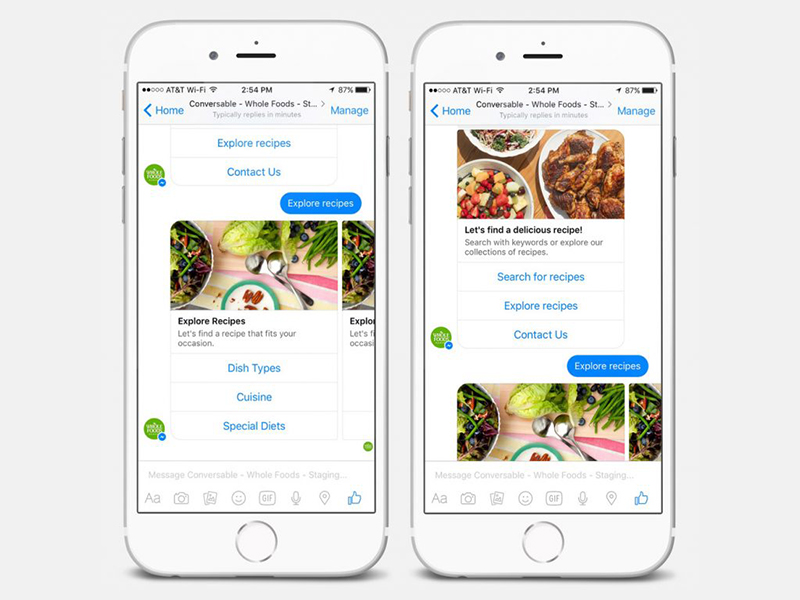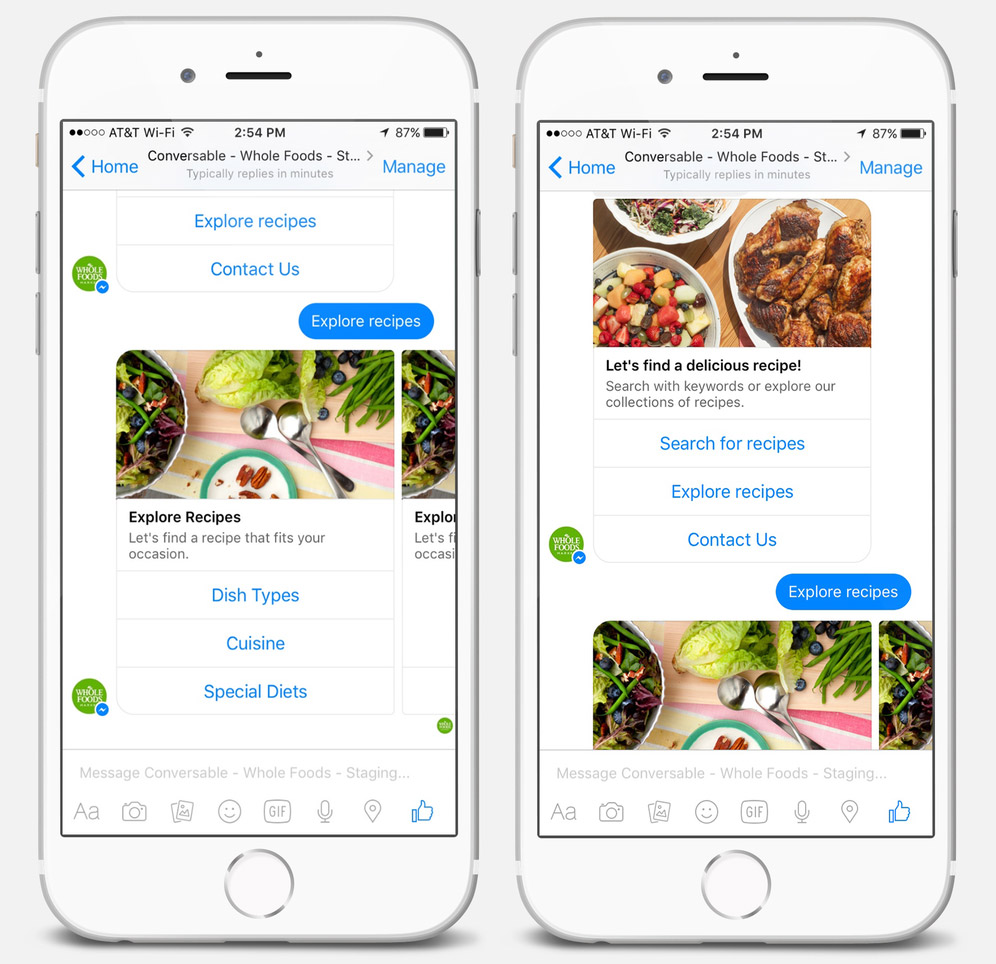There are hundreds of thousands of chatbots on Facebook Messenger, belonging to seemingly every brand under the sun. And soon there will be more. Salesforce surveyed 3,500 customer service agents from around the world in November and December, discovering that 23% already use chatbots and 31% more planned to adopt them in the subsequent 18 months.
Marketers are clearly excited about chatbots. But are consumers?
More often than not, no. Last year, Gartner made a provocative prediction that chatbots will soon power the vast majority of customer service interactions by 2020. However, survey company Usabilla found that 55% of consumers would prefer a human customer service representative.
“Chatbots outperform human beings in most areas. However, when it comes to getting expert answers to personal questions, chatbots simply don’t perform as well,” says Ryan Dearlove, founder of Chit Chat, a messenger marketing agency. “It’s important to understand that a business doesn’t need to choose between offering their customers a chatbot or having human operators to interact with.”
Advantages and shortcomings
Some advantages of artificial intelligence include the ability to provide instant service around the clock. They can also “remember” a customer’s history, providing more personalized service. Dearlove’s favorite example, a non-branded chatbot called Cleo, does this well. Cleo manages users’ bank accounts, helps with budgeting, and analyzes transactions in order to provide financial advice.
Most aren’t actually that sophisticated. Last month, Forrester Consulting and chatbot software company Ada asked customer service decision makers in the U.S., U.K. and Canada about capabilities such as providing personalized responses to consumers’ questions, understanding the customers’ history with the brand and understanding context. More than 90% agree that all three are important. However, the number of companies with the ability to execute on those things is far lower.
“When Facebook launched its platform in 2016, there was this massive hype around bots and how they’d do absolutely everything and you could never speak to a human,” says Joshua March, CEO of customer experience platform Conversocial. “It’s very hard to build a bot that can have anyconversation, but they can be very good at simple repetitive tasks where there’s a limited set of questions with answers that are easy to present.”
Kayak has a chatbot consumers can use to book flights. The experience is clunky and frustrating (and explained in more detail here). It would be far faster and easier to book on the website.
March notes that booking a flight is a complex process. He believes airlines would be better off with a chatbot that helped people modify flights, helping complete tasks such as changing seats or adding bags. There are far less variables, decreasing the odds a consumer would make an impossible request for the chatbot.
“Booking a flight is a pretty complex process,” he says. “Airlines spend millions of dollars figuring out a simple UX. Trying to jam that into a conversational experience is often not a very good option.”
Chatbots at their best
March thinks chatbots are best when they’re complementing, rather than replacing, people. Many people contact brands to inquire about the status of their online orders. That’s a simple question for a bot to field, leaving more nuanced problem-solving to human customer service representatives. And they can do so faster, having delegated those questions to artificial intelligence.
While chatbots are great customer service tools, they’re also capable of so much more. Dearlove is seeing more brands create standalone campaigns, which allows users to directly engage with their brand “by choice rather than circumstance.” For example, Fandango’s Facebook Messenger bot boasts plenty of features beyond buying tickets. It also allows consumers to watch trailers and learn about movies that are trending. Whole Foods customers can search recipes with emojis, filtering by dietary restrictions.
“Continue to optimize your conversational experience,” he recommends. “I believe messenger marketing is the biggest opportunity for smart businesses right now. Unlike many other marketing channels, it allows you to extend the customer interaction beyond the first click.”


